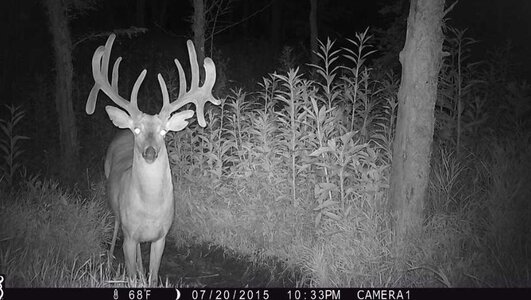cahaba_hunter_20
New Member
So, I actually already have a model that does a pretty decent job estimating a deer's gross antler score from a photo. Unlike the tool you are describing, mine can instantly estimate the score of the deer without taking any manual measurements because I'm using a computer vision model. Of course, accuracy depends on the quality of the photo, how much of the rack is visible, etc.Your original post said you were trying to estimate a bucks gross score. It was quite a while ago, but there was a tool I evaluated. I think it might have been called trophy score or something like that. It was basically a measurement tool where you took measurements between ears and snout to calibrate antler measurements. You needed closer pics than I have for a tool like that.
In your most recent post you said you are trying to train an AI classification model. I think you will find that you need way more than 4-5K images to train a CNN classifier.
Having said that, good luck with your project! Some of the big AI companies have convolutional neural network classifiers that are general purpose and are as good or better than humans at identifying subjects in pictures. They have run literally millions if not 10s of millions of tagged images through them for training.
I think classifying deer from trail camera pictures is even more challenging. The data sets used to train the CNNs are generally scraped from the web. (Lots of legal work going on in this area). Those pictures are generally taken by humans and posted. Those are generally high quality images or folks would not post them. Lighting is generally reasonable, pictures are in focus, atmospheric conditions are generally good. Game camera pictures are taken when a PIR trips a camera in all kinds of conditions. Things like black flash are used to deal with camera avoidance. Weather conditions vary wildly from fog to sun glare and more.
The more variety in the picture conditions, the larger the training dataset needs to be.
My dataset has variation in tagging. My cameras run 24/7/365 for year, but we only extract and analyze a subset of data. For example, we use early Jan thru late March to estimate survival. We don't care about buck doe ratios for this, so while I tag the number of deer pretty well, if it is not obvious, I tag the sex as unknown. I don't take the time to zoom in or use tools to clean up pictures to identify the sex during this period. Many bucks have lost antlers anyway. The other period we analyze is the month of September. We use this dataset to establish buck:doe and doe:fawn ratios. During this period, I take much more care to identify sex, zooming in and using photoshop to clean up pics to identify sex. During this period, bucks have enough antlers to identify them as bucks and fawns are still easy to distinguish from does. For the rest of the year, I go back to being lazy tagging sex.
Are you a grad student working on a school project or is this a commercial endeavor?
My issue now though is if someone were to upload a photo of a buck where there is more than one buck in the image, or no buck at all in the image, the model will still estimate a score that will be either wildly off if there are multiple bucks or will be confusing to the user if say you upload a picture of a car and my model tries to score it.
That's why I'm trying to have an initial model that throws a warning if there are more than 1 buck in the photo or no buck at all before I actually use the second antler estimation model. So, I'm looking for someone that'd be willing to share all their game camera photos regardless of what's in it. If the photo has a turkey in it or takes a photo of nothing but woods, then that would fall in the "no buck" category and still be useful to train on. The reason I only need 4-5k images is because I'm using a pre-trained a model that is fine-tuned on only a small subset of images.
This is a passion project of mine, so I just work on it on the weekends for fun when I have time after my daughter goes to sleep. I would love to get it online someday though and would likely charge a couple dollars/month to help cover website costs. Shoot me a message if you want to know more! I already have 3-4 game cameras out in the woods getting photos, but was hoping to get a wider variety of photos from other people too.

